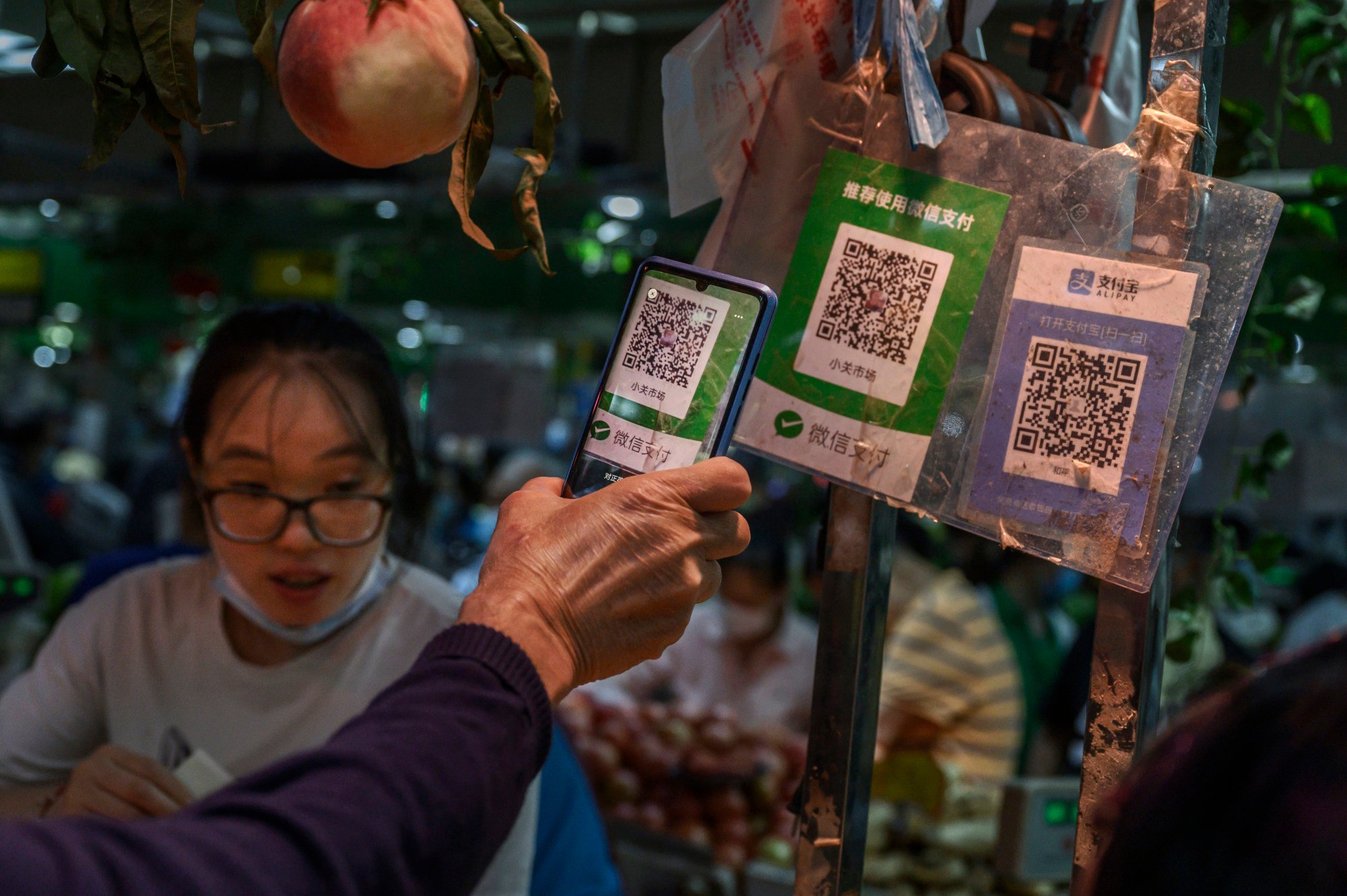
China sends message it wants foreign visitors to spend money, whether they pay in cash or through mobile payment apps
- Going cashless in China as the locals do has proved tricky for overseas visitors with cards issued by foreign banks, and the central bank recently intervened
- In Japan, a town with a Lawson convenience store fronting Mount Fuji has been so put out by tourists taking photos it is erecting a barrier to hide the view
“Cash is king” in China, according to a recent headline in The Guardian newspaper.
Oh no it isn’t, says everyone who has been there in the past few years.
If you don’t have a WeChat Pay or Alipay app on your phone, you are unlikely to get very far in today’s People’s Republic.
To be fair to the British newspaper, the full headline is “Cash is king – for now: China signals it will slow transition to cashless society”, and the article below it outlines how rare cash now is, at least in the big cities.
Going to Shenzhen? A guide to visas, the apps you need and cashless payment
Google searches suggest only Norway, Finland and Sweden are less reliant on notes and coins than China, but – when it comes to international tourism – those Scandinavian countries have an advantage; visitors can spend digitally without having to jump through hoops.

“I have tried linking three foreign credit cards, including the big Chase, to Alipay, WeChat Pay and DiDi [taxi app] with no success. I tried in US, on the plane, in HK and China, no luck. Many hours were wasted and my US banks are annoyed with me for keep contacting them from abroad,” commented one reader below the story, “China travel: cashless-society shift hits foreign tourists who really want to open wallets and spend”.
And the linking process is clunky for some of those who do get in: “The issue I’ve had is that it’s not so intuitive – you have an international version of the app (some vendors accept, some don’t), and a local version,” wrote another reader.
Another hurdle for foreigners, from the West in particular, has been the need to divulge personal information in order to get connected.
China pledges further steps to make payment apps easier for foreigners to use
All of which explains why Charlie Chen, manager of Guangxi-based travel agency Easy Tour China, told the Post, “Cash is still the major payment method for overseas travellers.”
But authorities appear to be keen on ironing out the problems – or at least allowing the old ways to persist for a bit longer while the world catches up.
“In December the state People’s Bank of China [PBOC] and the State Administration of Foreign Exchange issued guidelines and established a working group designed to improve the financial arrangements for visitors, including boosting the number of businesses and ATMs that took foreign cards,” reports The Guardian.
“Three months later the PBOC and the Beijing municipal government issued further guidelines, including broadening acceptance of foreign e-wallets, while not requiring ID from foreigners using payment apps below a particular threshold.”
Fifty taxis in Shanghai now accept foreign credit cards, apparently, although finding one of them in a city with more than 50,000 cabs sounds like a tall order.

On April 16, the PBOC issued a notice together with a number of ministries requiring local authorities to ensure retailers and hospitality venues in key business and tourist districts were equipped to take foreign payments.
“In terms of enriching mobile payment applications, the [Notice on Improving Payment Convenience in Payment Services in the Commercial Sector] encourages e-commerce platforms to fully consider the consumption needs of foreigners in China, strengthen cooperation with banking financial institutions, non-bank payment institutions and clearing institutions, optimize international services, and enrich multi-language services,” reported the People’s Daily Online.
On April 9, Bloomberg had quoted media group Caixin as saying, “Chinese hotels with three-star ratings and above have been told to accept foreign bank-card payments, as the government tries to make life easier for those visiting the country.
“Major tourist attractions have also been instructed to accept overseas bank cards, as well as support payments in cash and increase foreign-exchange services.”

Good news, then, for those who would like to visit China – and those who were concerned Beijing felt it did not really need or want foreign visitors any longer.
The message seems clear; make it easy for foreign visitors to spend, whether it’s with their cards or with cold, hard cash.
The king is dead, long live the king.
Lawson and order
Nothing represents Japan quite like Mount Fuji. Nor, indeed, like Lawson.
So you can imagine the appeal to social media snappers of a classic shot of the two; Japan’s tallest peak in the background, a smart-looking branch of the convenience-store chain in the foreground.

Unfortunately for the townsfolk of Fujikawaguchiko, they have not had to do any imagining.
Several spots around the town have views of Fuji-san, but the soc-med herd have been crowding around this one, dropping rubbish and ignoring traffic regulations while in pursuit of the “perfect shot”.
Warnings have been issued, and duly ignored, so the barrier is a (hopefully temporary) last resort; construction of it may even have begun as you read this.
The climbing season begins in July but the number of those allowed up the mountain will be restricted this year, reports Nikkei Asia.

“Yamanashi prefecture will install a gate at a common starting point midway up the mountain on the most popular climbing route and limit the number of people who can pass through to 4,000 per day.
“A toll of 2,000 yen (US$9.40) per person will also be required to pass through the gate, on top of the 1,000 yen voluntary contribution now asked of climbers. Gates will be closed from 4pm to 3am.
Tolls are not going to be charged on the Shizuoka prefecture side of the mountain, “But to prevent people from climbing rapidly to the summit to watch the sunrise without staying in a mountain lodge, it will start a trial where it places staff near trails and restricts people from entering after 4pm.”

